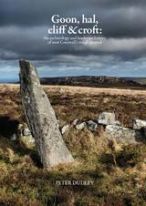Occasionally, instead of a lecture or a discourse, the Royal Institution stages a short play in the Faraday Theatre. Last October, for example, I saw Juliet Aykroyd’s gripping play The Ostrich and the Dolphin, about the relationship between Charles Darwin and Robert FitzRoy during their voyage on the Beagle, and how The Origin of the Species subverted FitzRoy’s beliefs later in his life.
Tonight was Blooming Snapdragons, written and performed by Liz Rothschild and with Syreeta Kumar, commissioned by the John Innes Institute to celebrate their centenary.
The play dealt with ‘Bateson’s Ladies’, a group of women scientists working with William Bateson on the genetics of snapdragons at the turn of the twentieth century; William Bateson is best known as the champion of Mendelian genetics, and was the first to use the word ‘genetics’; he also, along with Francis Darwin, championed women’s education at Cambridge.
Up until 1948 women were unable to obtain degrees from Cambridge University. They might be suffered to attend lectures, albeit perhaps sitting at the back or in the gallery, they might get a good pass in their exams, but they wouldn’t get a degree.
There had been a vote to allow women to be admitted to degrees at Cambridge in 1897: special trains were run, graduates who were voting against were offered free food and lodging; the vote was 138 for, 1085 against; an effigy of a woman on a bicycle was hung from a building, and was later beheaded; there was what can only be described as riotous behaviour, and Cambridge was ‘saved’.
As a modern parallel to Bateson’s Ladies, Syreeta Kumar played a modern geneticist, with Liz Rothschild as her lab technician and several of the ‘ladies’ – Muriel Onslow (author of Practical Plant Biochemistry), Rose Scott Moncrieff, Rebecca Saunders, and Bateson’s wife Beatrice, among others.
Very little is known of most of these women’s lives or work, some more than others: Rebecca Saunders got a First Class pass at Cambridge, was the first female president of the Botanical Section of the British Association for the Advancement of Science, and was awarded the Banksian Medal by the Royal Horticultural Society, but couldn’t borrow a library book from Cambridge University as she had no degree. She was killed in a bicycle accident aged 80 and all her notes and slides were inexplicably destroyed.
There was a modern sub-plot woven through – Syreeta Kumar’s character Adi is waiting for a phone call with the result of a test for Huntingdon’s Disease, a neurodegenerative disorder, to show the importance of the Ladies’ work: modern genetic testing is directly descended from the work they did.
I enjoyed the play very much. There’s a performance from Norwich available to watch at the John Innes website My only reservation was about the several occasions when the play broke off for the cast to question the audience: we would be asked, for instance, ‘who likes patterns?’, ‘who’s been to Majorca?’, and I found this a little distracting, breaking my suspension of disbelief; possibly this aspect is more suited to an audience of school parties?
The audience was predominantly female – I did a rough head count and it was about 7:2 female:male; this is very different from a usual Ri audience which usually has a male majority, and there also appeared to be very few of the usual Ri attendees tonight, which is a shame.
The play finished on the interesting question ‘What would science look like if half of scientists were women?’






































































































“couldn’t borrow a library book from Cambridge University as she had no degree” – gosh that makes me fume! I enjoyed your review though. Have you seen the Ada Lovelace pages? You might be interested in Ada Lovelace day next year http://findingada.com/
Thanks, I’ll check that out.
Rebecca Saunders would have had to ask a male graduate to borrow any books she wanted for her. I wanted to check some facts to include in the post about these ladies about whom little is known, but failed miserably to find anything online. The playwright got much of her information from archives at John Innes (four boxfiles is all there is) and obituaries written for Cambridge University.
I think the problem with male dominance in science goes way back to the days when it was known as Natural Philosophy and was done by gentlemen. It was a class as well as a sex thing – Hooke never got the credit he deserved because he would get on and build things and was ‘kept on’ by the Royal Society as a technician (he also made an enemy of Newton who was a vindictive bastard).
The gentlemen natural philosophers would employ servants to perform the experiments for them, and it wasn’t unheard of for them to send the servants out into the streets to round up a few peasants to try things out on. Their wives would do a lot of the secretarial-type things, recording results, etc, as well as helping with some of the practical stuff; and in the second half of the eighteenth century it wasn’t seemly for women to open themselves up to public scrutiny – Fanny Burney sold her first play to Sheridan for performance at the Drury Lane Theatre, but her father intervened and stopped it being performed, and persuaded her to follow the dictates of propriety and become a novelist instead (but her first novel was published anonymously).
So sexism and classism were deeply entrenched in society during the period when modern science was starting to evolve – I’m pretty sure that the reason there’s a gallery in the Royal Institutions Faraday Theatre is so that the hoi polloi could attend discourses without mingling with the toffs.
Pingback: Tweets that mention Blooming Snapdragons at the Royal Institution | Bagotbooks's Blog -- Topsy.com
I have just discovered that there’s a video of this being performed (at Norwich) on the John Innes website at http://www.jic.ac.uk/Corporate/friends/events/bloomingsnapdragons.htm so have added a link in the post. I had to watch it in Internet Explorer, though, as the viewer caused Firefox to crash.